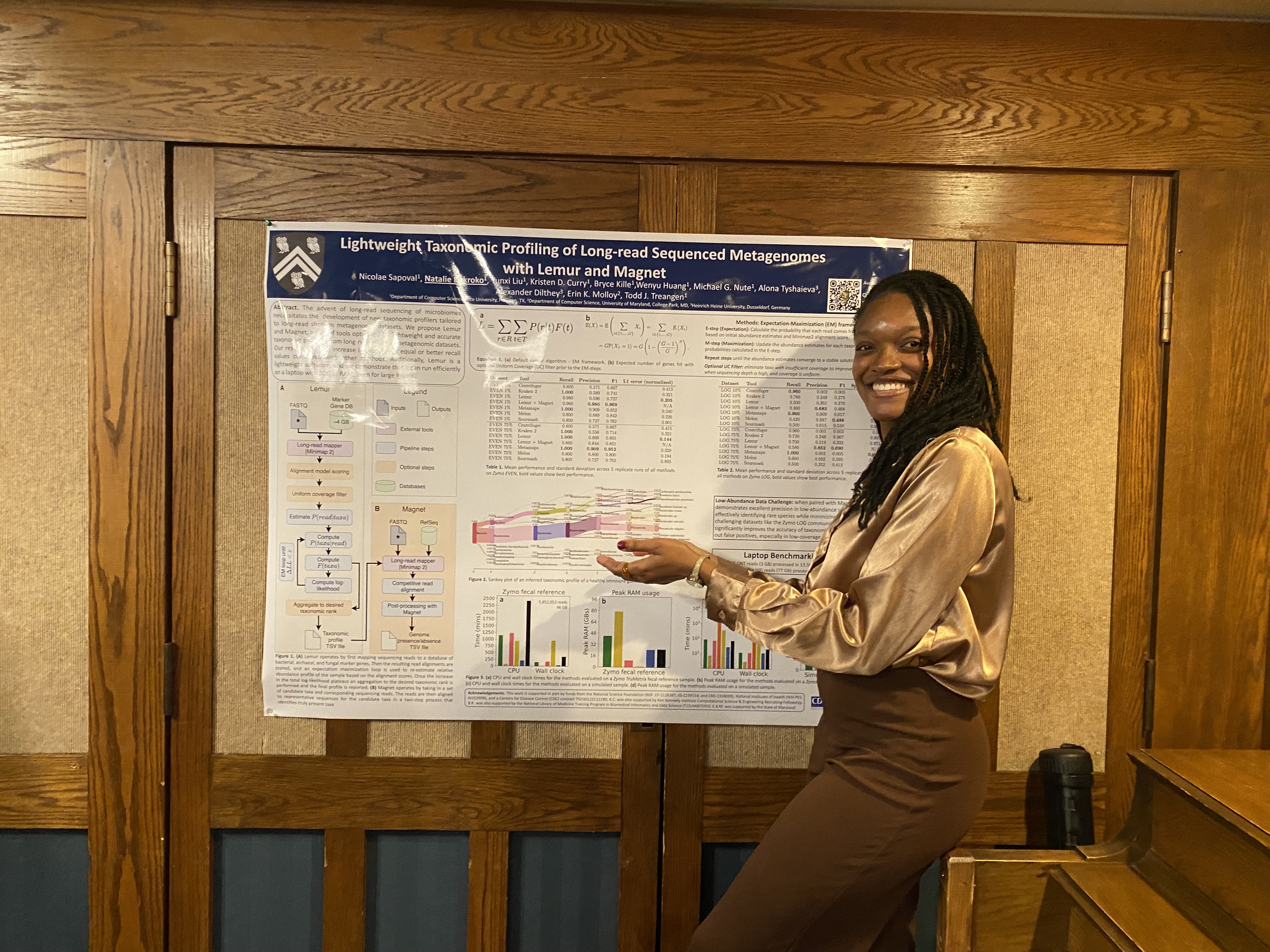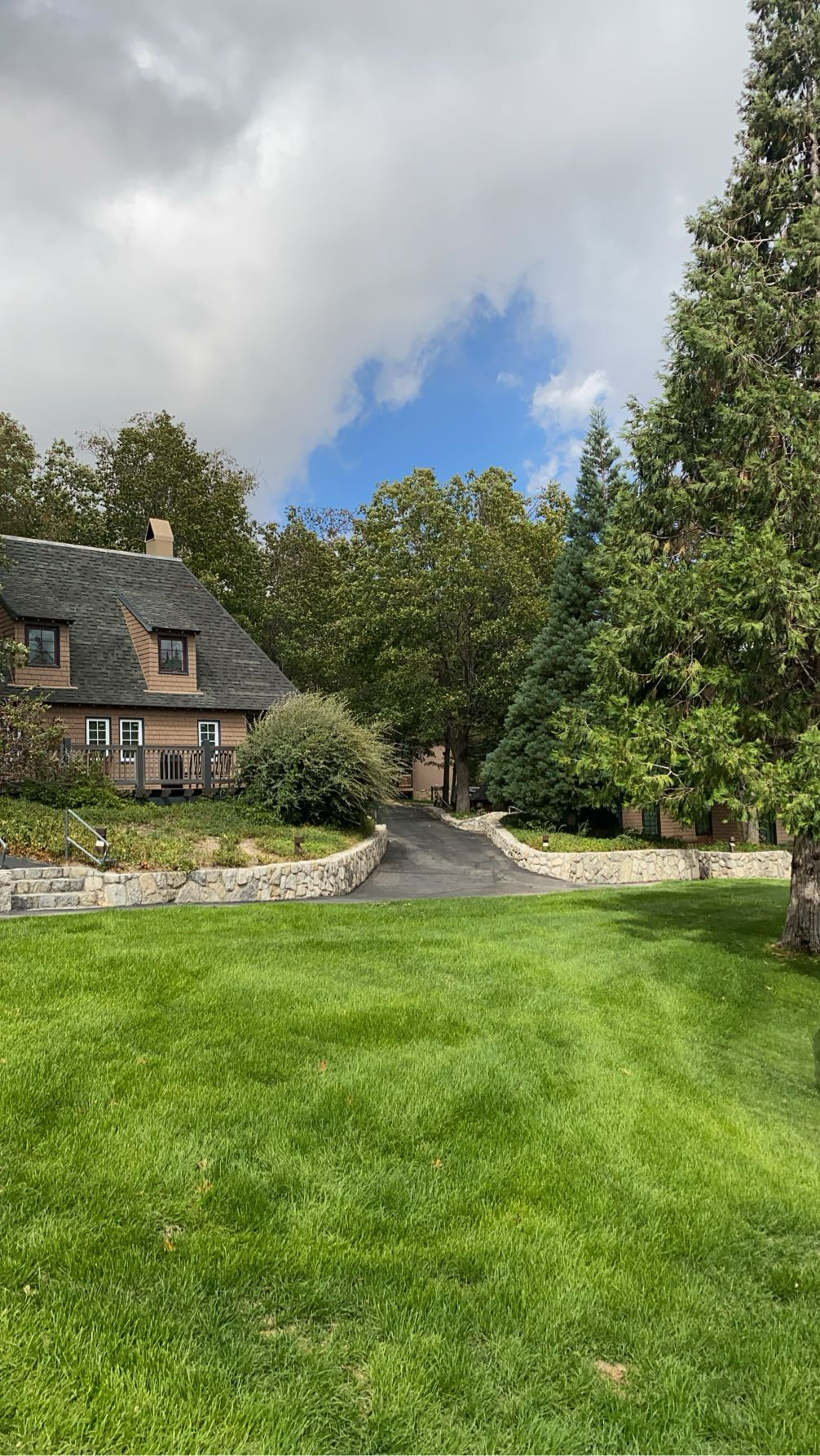Reflections from Lake Arrowhead Microbial Genomics 2024
Natalie's first experience and takeaways from the Lake Arrowhead Microbial Genomes Conference, 2024.
Introduction
I am excited to share my experiences at the Lake Arrowhead Microbial Genomes (LAMG), 2024 Conference, held from September 15th to 19th at the beautiful Lake Arrowhead. Presenting my poster on two computational tools, Lemur and Magnet, developed by Treangen lab alumni; Dr. Nicolae Sapoval and Dr. Yunxi Liu respectively, was a privilege. Lemur is a tool for rapid and accurate taxonomic profiling on long-read metagenomic datasets and Magnet is a computational tool that uses reference based method to refine taxonomic assignment and provide accurate abundance estimations. Find more details about these projects here

First Impressions
The setting was stunning! We stayed in lakeside cabins with a serene, scenic view, and the perfect California weather made it easy to unwind, enjoy nature, and dive into productive networking and science.

As a computational biology and bioinformatics student, it was exciting to be among a predominantly wet-lab audience, sharing insights and learning what biologists value in computational tools. I liked how there was a good mix of students and PIs and Biotech companies as well. This gave me the industry and academia interplay which I really like to see. The diverse talks were inspiring, and two stood out to me in particular.
Highlights of the Talks
One of the standout talks for me was Dr. Drew Schwartz’s(https://scholar.google.com/citations?user=_eybPZYAAAAJ&hl=en) presentation titled, “Pediatric Gut Microbiome Development and Disruption.” Dr. Schwartz’s work dives deep into the potential of the microbiome to inform personalized medicine—especially for vulnerable pediatric patients.Dr. Schwartz raised an interesting question: Can the composition of a newborn’s microbiome predict their risk of bloodstream infections? The goal is to explore the use of rapid long-read sequencing combined with advanced computational algorithms to conduct personalized risk assessments and support antibiotic stewardship. This approach could significantly reduce unnecessary antibiotic treatments for infants, which is a crucial step toward optimizing neonatal care.
Another great talk “Into the Unknown: Genome-resolved Metagenomics of Soil using HiFi Sequencing,” Dan Portik delved into the complexities of soil metagenome assembly and the potential of long-read sequencing to improve it. Using the latest Revio PacBio sequencer, Portik and his team tested HiFi-MAG-Pipeline to generate metagenome-assembled genomes (MAGs) with high accuracy, overcoming the long-standing challenges of soil metagenome assembly. He demonstrated how short-read sequencing struggles with MAGs, whereas PacBio HiFi’s long reads can deliver transformative, scalable assemblies, marking a significant advancement in metagenomics research.
Poster Presentation feedback
I received positive feedback on my poster, with a lot of interest in Lemur and Magnet’s efficiency and precision. Participants appreciated how lightweight the tools were, and many were impressed by Magnet’s capability as a quality check and abundance estimation tool. There was also interest in expanding the tools to detect viral species. The networking opportunities were invaluable, especially as a “bio-heavy” conference where I could learn directly from biologists, the primary users of the tools our lab develops. Hearing from researchers who had already used Lemur was a gratifying highlight, especially when they shared how straightforward and effective it was for their analyses.
Overall Experience
Overall, my first trip to Lake Arrowhead was a memorable experience, surrounded by beautiful mountains and lakes. Beyond the picturesque setting, this conference was a rich environment for networking and sparking new ideas. It highlights for me the collaborative nature of the microbial genomics field and the importance of continuous interactions between computational and biological perspectives. I’m excited to bring back these insights to our lab and continue contributing to the dynamic world of microbial genomics! This is a conference that anyone with an interest in microbiome studies should attend, the diverse work being done across the world in this field is mindblowing and very innovative. The remote location of Lake Arrowhead also gave me time to focus on science with no distraction.